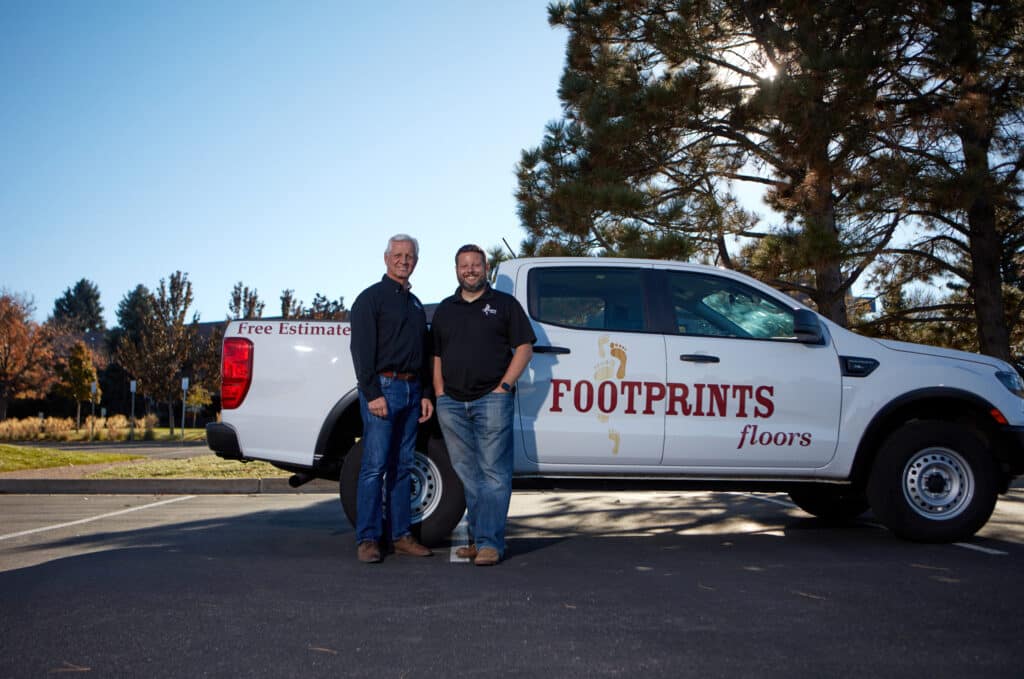How to Spot Red Flags in the franchise disclosure document (FDD)

Fairly early in the franchise discovery process, franchisee hopefuls will receive a document known as the Franchise Disclosure Document (FDD). Franchise disclosure documents are legally mandated by the Federal Trade Commission (FTC). Buying a franchise and becoming a successful franchisee requires you to read the FDD for your selected brand carefully and clearly understand its terms before entering into a legal relationship.
Most individuals outside of the legal profession initially view the franchise disclosure document as an overly onerous legal document, as it is as complex as it is confusing, and that’s mostly correct. But as you become acquainted with the document and shed your initial sense of overwhelm, you’ll realize that it’s relatively well structured. Even better, the language is written at a level the average person can understand. You absolutely possess the ability to read and understand its contents.
When armed with the knowledge of a franchise industry insider, you can successfully leverage the information in the franchise disclosure document to gain greater insights into the quality of the franchise brand you’re considering.
**Note that since the franchise disclosure document is a legal disclosure document and not a legally binding contract, you don’t necessarily need to hire a lawyer to review it. But before signing the legally binding franchise agreement, you should absolutely consult a franchise-specific attorney. The information in this article should not be used as a substitute for legal advice from a licensed attorney.
The franchise disclosure document is a document the Federal Trade Commission (FTC mandates each franchisor to offer each of their respective franchise candidates). At a basic level, the FDD intends to define the legal relationship between the franchisor and franchisees. At a deeper level, the FDD is written to protect the brand (and everyone who has invested in the brand) since a single franchise owner will be entrusted with enough responsibility to potentially harm the brand without the details of that legal relationship being firmly in place.
Here’s the underlying truth that no franchise development representative or brand is likely to tell you directly: since the franchisor is responsible for creating and establishing the terms of the franchise disclosure document, its underlying intent will always be to ensure that if a legal dispute arises between the franchisor and a franchisee, the franchisor is slated to win.
I’ve explained this to franchisee candidates in the past (and just as directly). Their responses are almost always the same: “Who in their right mind would sign that?!” But it’s not at all unusual for the terms of an agreement to favor whoever wrote it. Have you ever reviewed a rental or lease agreement with a lawyer? You’d be surprised by the terms you’ve agreed to in the fine print of most of the contracts you’ve signed.
The number of active franchise businesses has grown significantly over recent years. Since the beginning of this year, I have responded to balking candidates by reminding them: “There are about 750,000 active franchise agreements as we speak.”
If the franchise disclosure document’s terms are so unfair, why do people keep signing up? In truth, having the terms of the franchise relationship set by the franchisor is not necessarily as unfair as it may sound:
The franchisor is responsible for protecting the investments and greater good of the collective franchise system. For all other franchise owners to survive, they must first ensure that no single franchise owner can bring down the entire brand.
But here’s the other truth: if a franchisor is only offering the support and functionality described in the legal document, it puts the entire brand in jeopardy. For the franchisor to succeed, the vast majority of the franchise owners need to succeed. For that to happen, they need to offer robust support functionality and constantly be working on behalf of the franchisor to improve the product and service offerings.
Indeed, the franchise disclosure document offers no real insight into the qualitative side of a franchise. It won’t tell you the full list of franchise support personnel, nor will it tell you the marketing programs they offer to help franchise owners get customers in the door.
But that’s no reason to entirely gloss over the franchise disclosure document review phase. When you take the time to read and understand the FDD in its entirety, you will gain valuable insights into the franchisor’s quality that you will not find anywhere else.
I read, on average, about 100-200 franchise disclosure documents in any given calendar year, which includes the brands I investigate for personal investments, along with the brands that I consider for representation within the Raintree brand. To learn more about the brands in Raintree’s portfolio and how we set ourselves apart as leaders in national franchise sales, read about our unique approach to franchise development here.
All FDDs share roughly the same format and are made up of 23 items. After years of practice, I can quickly scan them for red flags and promising business opportunities.
This table offers a basic understanding of the 23 items, which you’ll need to appreciate the types of red flags that I look for:
| Item # | Subject | Description |
|---|---|---|
| 1 | The Franchisor, Its Predecessors and Affiliates | contextual, provides a short history of the franchisor and a high-level overview of the business |
| 2 | Corporate Officers | a brief five-year biography for officers, directors, owners and top executives |
| 3 | Litigation | the complete list of any past or pending litigation involving the franchisor over the past ten years. If nothing is listed, then this indicates that there are no lawsuits. |
| 4 | Bankruptcy | a list of any bankruptcies over the past 10 years for the franchisor and/or any owners, employees, or affiliates |
| 5 | Initial Franchise Fee | the amount and payment terms for the initial franchise fee and any other prepayments (such as real estate and construction fees) |
| 6 | Other Fees | the recurring fees and additional payments (such as local advertising fees and national advertising funds) that franchise owners are responsible for, along with an explanation of how those fees have been calculated |
| 7 | Estimated Initial Investment | a table that summarizes the anticipated low-end and high-end ranges for the financial investment you should expect to make to get the business up and running |
| 8 | Restrictions on Sources of Products and Services | the complete list of products/services the franchise owners must purchase from the franchisor or a designated supplier, and whether the franchisor receives revenue from the sale of those products/services |
| 9 | Franchisee's Obligations | a table that covers all the things you’re responsible for as a franchise owner in order to get the business started |
| 10 | Financing Options | a description of any financing offerings the franchisor may be providing directly (but remember that this item will not list any banking or 3rd party financing relationships) |
| 11 | Franchisor’s Assistance, Advertising, Computer Systems, and Training | the complete list of all services the franchisor will perform, along with the resources provided, to help franchisees become successful |
| 12 | Territory | clearly details the minimum amount of geographical area you will be granted in which you are legally allowed to operate the franchise (note that depending on the type of franchise and the franchisor, franchisees may not be awarded an exclusive territory) |
| 13 | Trademarks | a list of all trademarks the franchisor has secured for the brand |
| 14 | Patents, Copyrights and Proprietary Information | the legal rights that a franchisor has over any intellectual property, including common law copyrights and trade sections that a franchisor claims to own |
| 15 | Obligation to Participate in the Actual Operation of the Franchise | makes clear any obligations regarding whether you, as the franchise owner, are required to work full-time in the business or if semi-absentee or entirely passive ownership is permitted |
| 16 | Restrictions on What the Franchise May Sell | clearly explains obligations to sell only the goods and services that the franchisor provides, which preserves the standards and consistency of the brand |
| 17 | Renewal, Termination, Transfer and Dispute Resolution | discusses all possible end-game scenarios for the franchise owner, including how long the agreement lasts; options for extending the agreement, selling your franchise, and under what terms the franchisor might terminate the agreement |
| 18 | Arrangements with Public Figures | notes any business relationships the franchise brand has with a public figure and notes the rules surrounding how franchise owners may or may not be able to use the name |
| 19 | Financing Performance Representations | requires the disclosure of earnings for either corporate locations, franchise locations, or both (note that there might not be any earnings representation, as this depends on the brand’s level of franchise development) |
| 20 | Outlets and Franchisee Information | includes five tables providing the last three years of information of the franchise system, including franchise owner growth, corporate growth, transfers, terminations and projections of new openings |
| 21 | Financing Statements | the franchisor's previous two years of balance sheets and income statements for the previous three years; these are audited financials that must follow generally accepted accounting principles |
| 22 | Contracts | includes copies of all documents you need to sign in this section including franchise agreements and lease agreements |
| 23 | Receipt | a one-pager that states you acknowledge receiving the franchise disclosure document |
To read your franchise disclosure document like a professional, you’ll need to understand how the content under each of these items can influence your working relationship with the franchisor.
Here’s what my decades of experience have taught me:
ITEM 1 (The Franchisor, Its Predecessors and Affiliates)
- I’ve found that brands who franchise too quickly may still be testing and developing their business model, which ultimately means that their franchisees are not really getting the value of a proven business concept yet are still responsible for paying the franchise fee and ongoing royalties to the brand.
- So essentially, the franchisees are subsidizing the risk level for the original business. While certain types of investors are comfortable with these riskier opportunities (as it allows them to be early adopters, gaining access to a young brand while territory availability is at its peak), these business opportunities are not for everyone.
ITEM 2 (Corporate Officers)
- Look at the number of executives. If there is just a founder listed, then chances are the brand has not yet built out a solid support team. Often, a small or non-existent executive team, aside from the founder, means that you will be missing out on value in terms of executive-level support, which is largely what you’re paying for with the franchise fees and royalties.
- While I don’t see a non-existent or small executive team as ideal, it does make sense to me under certain circumstances. When the brand is emerging, it doesn’t have as many personnel as a more mature brand, mainly by design. The brand will invest in itself and its personnel over time. But early on, a smaller executive team can work perfectly well, so long as the founder is willing to hold hands with the first group of franchisees and walk them through the founder’s process. In fact, in this situation, I think a smaller team is actually a net plus. This can offer even greater support than a few less familiar executives could because the founder will personally coach franchise owners through starting and maintaining their franchise establishments. In a way, it’s a hybrid between chain expansion and franchising, offering the franchisee the best of both worlds.
- IMPORTANT: When looking at item 2, identify if there is actual franchise experience on the roster. Just because a group of professionals created a highly successful business doesn’t mean they know how to create a highly successful franchise system. A business and a franchise system are two completely different animals.
ITEM 3 (Litigation)
- This section contains the brand’s dirty laundry, so franchisors want this section to be as short as possible. A long list of disputes here is a definite red flag; it more than likely suggests a broken business model or a franchisor that lacks the ability to work through conflicts in a constructive and healthy manner.
- Litigation issues occasionally happen, regardless of how strong and profitable a brand may be. It’s important to distinguish between litigation issues that signal a red flag for the brand versus litigation issues that signify a franchisor simply enforcing the brand’s integrity. But the latter may still signal potential problems in the franchisor’s process, meaning that the brand may not have an excellent system for selecting franchisees. Look at the details of the specific lawsuits and the relative number of lawsuits per total number of franchisees. Once you have hundreds or even thousands of franchisees, the chances for litigation issues to arise increases. In this case, making sure that you’re an ideal culture fit for the brand is imperative before signing on.
ITEM 4 (Bankruptcy)
- Bankruptcies are more common and less stigmatized now than in the past, so don’t immediately move on to the next brand if you see case(s) here. But, bankruptcies can indicate inefficiencies and inexperience within higher-level leadership and business strategy echelons.
- If you see multiple examples, or if any of the C-level executives have been involved in a bankruptcy, ask for more information and dig deeper to understand why. If your requests for clarification are shrugged off or met with unsatisfactory answers, know that you probably aren’t getting the whole story. Consider moving on to a brand that treats you as a business partner and is more willing to be forthcoming about the brand’s trouble spots. Remember that you are buying into this history as a franchise owner and deserve to be fully informed.
ITEM 5 (Initial Franchise Fee)
- Some franchise brands don’t charge a flat fee. Occasionally, they base the charge according to local population size or zip code. Make sure you are crystal clear on what this amount would translate to in your community and market.
- Less expensive franchise fees don’t always indicate a good deal. In my experience, this often suggests that the franchisor hasn’t been as successful in attracting a talented pool of franchise owners. As a result, they’ve resorted to cost-cutting to entice a better pool of candidates. Lower franchising fees will likely come at the expense of the quality support systems and resources for the brand’s franchise owners. Higher franchise fees allow brands the ability to reinvest in themselves at higher rates, enabling them to hire more staff as needed to serve critical functions for the brand overall, such as marketing efforts to attract additional highly qualified franchise owners.
ITEM 6 (Other Fees)
- This is where you will find the royalty payment structure. This is typically the largest fee you pay in exchange for the right to be a franchise owner. Make sure you understand how much the royalty amount is and how it compares to other franchise brands in this market segment. Keep in mind that this fee is non-negotiable for a quality brand. If the number is too steep relative to the franchise’s financial opportunity, it’s time to move on.
- If there isn’t much information on the local advertising fee, the franchise disclosure document review call is a great time to understand where that fee is being applied.
ITEM 7 (Estimated Initial Financial Investment)
- In addition to estimating what you will spend in each bucket (i.e., training, construction, furniture), you’ll see a table next to each line item indicator making clear to whom you will pay that money. If there are more than a few line items in which you pay the franchisor directly, it may indicate that the franchisor is profiting from your initial financial investment costs.
- Most costs should be paid directly to third-party vendors where, due to the volume purchasing power of the franchisor, you should incur lower fees than a business owner in the same industry who goes it alone. This is one of the top franchising advantages, and if you’re not gaining an advantage in this area, consider looking into a different franchise business opportunity.
- IMPORTANT: many franchisors tend to underestimate the three months working capital line. To properly forecast costs, ensure you ask current franchise owners what their initial costs were and draw specific attention to that line item.
ITEM 8 (Restrictions on Sources of Products & Services)
- Paying franchisors for certain products is mostly positive if it allows the franchisor to maintain consistency and quality. But some “bad apple” franchisors gouge franchise owners by demanding higher prices than the franchise owners could source.
- When speaking with franchise owners, asking about the items they must buy from the franchisor directly (or their designated suppliers) is a good idea. While in some cases, brands may be attempting to profit from deals with higher-cost suppliers, some brands use their scale to leverage better supplier relationships at the corporate level, guaranteeing lower-cost goods to their franchise owners.
ITEM 9 (Franchisee’s Obligations)
- This section is often quite exhaustive, but don’t stress! This is one of the sections where the franchisor protects itself from the possibility that individual franchise owners can bring down the whole system. Don’t interpret all the responsibilities here as your sole responsibility. Good brands have support personnel and processes to ensure you’re supported at every step.
ITEM 10 (Financing Options)
- Most brands don’t offer financing options, so don’t expect to see anything here in most cases. However, high-quality franchise brands often have strong relationships with 3rd party finance companies and will help streamline establishing that relationship and process for you.
ITEM 11 (Franchisor’s Assistance, Advertising, Computer Systems and Training)
- At a minimum you should see obligations from the franchisor to assist with:
- Training
- Site Selection, Lease Negotiation, & Construction Management (if a retail location)
- Permitting
- Advertising
- Website
- Software support
- Ongoing operational assistance
- Once again, keep in mind that all good franchise brands go above and beyond this list. They provide whatever support services necessary to ensure their franchise owners are profitable. Without the majority of franchisees being profitable, they can’t survive. For that reason, you can expect strong brands to be no more than a phone call away for anything the franchisee needs.
ITEM 12 (Territory)
- This can be frustrating for franchise owners, who often feel that the franchisor is placing new franchise owners too close to their territory, particularly when encountering lower-quality franchise brands. Usually, this is true. Inexperienced or poor-quality franchisors will deliberately cram as many owners into a geographical region as possible to maximize their franchise fee earnings. Always confirm with franchisors what their experience with the territory has been and what you should expect as a franchisee.
- It’s also vital to remember examples like Starbucks. In some areas, you can find one on every corner, and it works! Indeed, good franchisors know how to balance giving franchise owners enough breathing space to operate in with managing a growth strategy that maximizes their ability to gain traction, dominate the market, and outpace the competition.
ITEM 13 (Trademarks)
- This one seems so simple. Most people look at it for just two seconds and move on. But I’ve had a negative experience with two brands in my career due to not fleshing this out more. These brands had incomplete or missing trademarks for their brand names; as a result, their competitors later filed suits against them for trademark infringement. Luckily, both brands were small, but even still, the franchise owners had to go through a painful process of rebranding their entire businesses.
- A quick Google search of the trademarks can reveal any competitors that you can bring to the attention of the franchise and ask for feedback.
- If the franchisor acknowledges an issue here, in terms of lack of trademark, and based on my yucky two experiences, it is often a quick reason I pass on the brand. But make sure to ask if you’re unsure since very young brands may be securing trademarks and/or obtaining new ones. If not listed in the FDD, the brand should still be able to provide information about where they are in that process.
ITEM 14 (Patents, Copyrights and Proprietary Information)
- This is typically predominantly the copyright of brand assets and can more often be found in more detail by requesting to see the “brand standards” manual.
ITEM 15 (Obligation to Participate in the Actual Operation of the Franchise Business)
- If you’re interested in keeping your day job and investing in a semi-absentee franchise, ensure that this section clearly spells out that a designated manager can run the franchise. Do know that most brands will want the franchise owner to invest time into the business at the beginning and will want to see that owner come in for training even if they have a general manager already hired and ready to spearhead management.
- Furthermore, most brands want to see the franchise owner directly involved in the business for the first six months to a year in some capacity. If the owner is not trained on how to run the business, they won’t have the institutional knowledge necessary to manage their general manager.
ITEM 16 (Restrictions on What the Franchise May Sell)
- Depending on the brand, there may be more or less room for flexibility here, but all good brands will exercise some control over this area. Certain brands will want precisely the same goods and services offered at every branded location. In contrast, other brands, especially in the restaurant industry, are willing to be a little more flexible if it makes sense to offer a ‘local market item’ or beta test something that might benefit the brand as a whole.
ITEM 17 (Renewal, Termination, Transfer and Dispute Resolution)
- You might see that many franchise brands don’t give the franchise owner the power to terminate the agreement. No cause for alarm here, as it’s pretty standard – it’s just another franchisor tool for preventing one franchise owner from having the power to bring down the entire brand. In most cases brands won’t penalize a franchisee unable to continue forward due to economic circumstances or significant levels of personal stress. If you cannot move forward for either reason, in most cases the brand will understand and either help you to exit via a sale (if you have built up equity that can sell) or a shut down and debranding of the location. Additionally, the brand may purchase your equipment at a predetermined rate, or you may have the option to sell it elsewhere.
- I like to see 10-year terms in our franchise agreements. 5-year terms are sometimes a way for the franchisor trying to profit off of franchise fees and renewal fees, so be aware of that. Still, five-year terms also allow brands to make overhaul changes to their franchise disclosure document and franchise agreement more quickly. The devil is in the details.
ITEM 18 (Arrangements with Public Figures)
- This sounds like it should always be a good thing to see in a franchise disclosure document. But be careful. The list of ugly endings to relationships with franchisors and public figures is relatively extensive.
- If the public figures’ reputation goes negative, as in they do something bad, the franchise brand can feel that. So, look into the history of the public figure and access your personal view on risk vs. reward in attaching that person to your potential brand.
ITEM 19 (Financial Performance Representations)
- Admittedly, this is typically the part of the franchise disclosure document that I skip to first. To qualify as a Raintree brand, the franchise must exhibit truly elite economics. This is the first place that allows us to understand if the brand can deliver an ROI that our typical franchise owner clients like to see.
- If I hear a franchise representative tell you that you “can make X%,” and it isn’t a number that you see in Item 19; they are either potentially lying to you or are making what’s called an “Earnings Claim,” something the FTC outlaws, you should likely move on to find a more ethical franchise.
- The franchisor(s) you are evaluating may not have any information here. That represents about 50% of the brands I evaluate every year. There are two types of brands I’ve seen that decide to omit financial representations:
- Many franchisors fear the perceived legal risks associated with publishing revenues or profits in this section. I’ve gone on to invest and/or represent franchise brands that fall into this category, as the economics, while not easily found, ended up being strong.
- Franchise brands who believe listing their financial performance for the previous year were underwhelming and might hurt their ability to recruit owners. If our analysis suggests this is the case, we run like the wind, and you might want to too.
- Some brands may be unable to produce information because they are too new and are not legally allowed to put in any information. Younger brands, especially brands under two years old, may just be compiling enough information to justify including item 19 in their franchise disclosure document. Another possible situation frequently occurred between the years 2020 and 2021 when the pandemic resulted in several businesses closing down for all or part of those years. Even if there were sales numbers available for previous years, the lack of consistent reporting due to differences in locations’ operating times and individual state laws led to brands not being legally permitted to include anything in their franchise disclosure documents for previous years’ sales.
- Even when the franchisor’s list details P&Ls, you should read the notes for each table or representation. Poor quality or unethical franchise brands can often manipulate the data in specific ways. For example, sometimes franchisors list their corporate locations P&Ls to highlight their profitability. However, they fail to deduct the expenses a franchise owner would have, like the royalty, marketing fund, and other franchise-related expenses. Ensure you understand the represented locations variables and if they match up to what the average franchise owner would deal with.
- Whether the franchisor provides information on their financial performance, you should never rely solely on information the franchisor provides you on earnings potential. You should also verify your understanding of ROI potential when you hear from the franchise owners.
ITEM 20 (Outlets and Franchisee Information)
- IMPORTANT: One of the most important factors influencing a franchise’s financial health is whether the franchisees who sign on and open a unit actually stay in business. Some franchises remain open, even though barely making a profit because it would be too costly to close down. Companies with high business overhead costs don’t tend to close down and instead have a higher flip rate, where another buyer might come on for reasons like high cash flow or strong right-offs. In my experience, everyone believes they’ll run the business better, but very few actually look under the hood first to make sure they understand what they’re getting themselves into. In this section, I’ll look to see if there is negative growth (closings) and if so, I’ll mark it at the top of our list to learn why. Negative growth or even slow growth can indicate an ineffective business model or support program. A high-failure rate is, of course, a red flag.
- The information under this item can also indicate that the franchise brand is an ineffective recruiter of new franchise owners. We have several brands that have had almost zero growth in the three-year window, but the business models were strong. We have gone on to represent them, fixed their recruitment issues, and witnessed their growing national success. But on the flip side, looks can sometimes be deceiving. If a brand is growing quickly, it might identify hotter markets and anticipate higher openings in select markets. This might offer a clue about upcoming strategic initiatives that a prospect might want to follow up on to gain additional insight.
- I dare say ignore the Projected Openings table. Most brands we work with are purely guessing how many franchises they plan to award and open in specific states, as most franchises recruit nationally. In short, this data is an optimistic guess from the brand and cannot be relied upon when buying a franchise.
ITEM 21 (Financial Statements)
- Be sure you understand that these are the FRANCHISORS’ financial statements and NOT those of a franchise owner. Ensure the franchisor has assets in the franchise entity and should be at least equivalent to the investment of a franchise. In short, the franchisor should carry at least the same amount of risk that you are.
- Look for any long-term debt. Here the risk is of a franchisor who is forced to use franchise fees and royalties to repay debt and not put what’s needed back into growing the support infrastructure.
- Overall, a brand’s financial statement may not fully reflect the strength of the system, meaning that a strong system will be reflected more by the number of owners coming into the system, item 19, the satisfaction level of franchise owners (when you speak to them), the growth rate of locations, and especially the success levels of owners who open multiple franchise locations. All this information will be reflected in other parts of the document but may not be reflected here. You’d rather see the brand reinvesting dollars into its own growth than hoarding and storing away its profits. If you don’t know how to identify any of the above points, it might be a good idea to get an accountant to review and interpret this section for you.
ITEM 22 (Contracts)
- IMPORTANT: what information is included in a franchise agreement, and how does it differ from the franchise disclosure document? This section helps to understand what the franchise agreement will entail. The franchise disclosure document is not a legal document, but the franchise agreement referenced in this section is. Make sure the terms of the agreement accurately reflect what you’ve read in the franchise disclosure document.
ITEM 23 (Receipt)
- You’re not obligated to anything by signing this. The FTC wants to make sure you’ve been delivered the franchise disclosure document at least 14 days before signing a franchise agreement. Signing this item communicates nothing more than an acknowledgement that you’ve received the document.
As you can see, the franchise disclosure document fills in the blanks for many of the questions you might have. But this document may not provide the complete picture of whether the brand is right for you. Many people drop out at this step simply because they find the legalese in this document too overwhelming, even if this step doesn’t require the establishment of a legal relationship or obligation.
Individuals who can appreciate the necessity of the franchise disclosure document and respect the intention behind its primary objectives are the individuals who go on to investigate the merits of working with that particular brand and, ultimately, the ones who benefit from becoming franchisees.
Taking the tips above, remember to review the franchise disclosure document from a business partnership standpoint. As you identify any points in the FDD that bring confusion or concern, take note of them, and ask those questions directly to the franchise representative. After answering your questions, if the concerns from a business partnership standpoint remain strong, it might be time to move on to the next franchise brand.
From a legal review standpoint, it’s best to wait until you are closer to being approved before you engage the services of a franchise attorney. You don’t want to spend a few thousand dollars for legal work only to find out you’re not going to be a fit for the brand.
At Raintree, we see about 20-30% of franchisee candidates engage the services of an attorney for a review of the franchise disclosure document. This is primarily because our franchisee candidates know the FDD is non-negotiable. We ensure equality for every franchise owner by ensuring they all sign the same franchise agreement.
If you feel like you want an attorney to review the document, it is HIGHLY recommended that you use a franchise-specific attorney. The average attorney won’t understand the nuances of the franchisor/franchisee relationship, and ultimately, you’ll be wasting your money by having a regular attorney comment on something they don’t understand.
Lastly, remember that if you’re moving on to the next phase, don’t forget your list of key questions and concerns, especially concerning item 7 and item 19. You’ll do very well to verify these by hearing directly from the franchise owners themselves.
To learn more about Raintree’s brand portfolio and what makes Raintree a leader in national franchise sales, visit our website today and read about the top-tier emerging franchise brands we represent. Our franchise development experts and top franchise consultants are devoted to fostering healthy and sustainable franchise growth by matching quality brands with quality franchise owners.
- The Franchise Disclosure Document (FDD) is a legal document that brands are required to provide to their prospective franchisees
- The FDD is mandated by the Federal Trade Commission (FTC)
- The FDD discloses important information about the brand and also explicitly lays out fees and payment schedules expected of the franchisee
- The FDD also protects franchisors from franchise owners that do not abide by the terms of the contract, giving them the right to pursue legal action for the good of the brand as a whole
- Item 1: Offers basic information about the brand franchise
- Item 2: Includes a 5-year biography of all executive team members
- Item 3: Lists all active and past litigation involving the brand and its affiliates over the preceding 10 years
- Item 4: Lists any bankruptcies that have occurred involving the brand and its affiliates over the preceding 10 years
- Item 5: Details the initial franchise fee and any additional pre-payments
- Item 6: Details any other fees for which the franchisee is responsible
- Item 7: Details the estimated initial financial investment
- Item 8: Explains restrictions on the sources of products and services
- Item 9: Includes a table laying out the franchisee’s obligations
- Item 10: Financing Options
- Item 11: Lists franchisor’s assistance, advertising, computer system, and training specifications
- Item 12: Territory
- Item 13: Trademarks
- Item 14: Patents, copyrights and proprietary information
- Item 15: Obligation to participate in the actual operation of the franchise business
- Item 2
- Item 3
- Item 7
- Item 20
- Item 22

CHAPTER 2:
Lorem ipsum dolor sit amet, consectetur adipiscing elit. Ut elit tellus, luctus nec ullamcorper mattis, pulvinar dapibus leo.

Lorem ipsum dolor sit amet, consectetur adipiscing elit. Ut elit tellus, luctus nec ullamcorper mattis, pulvinar dapibus leo.

Lorem ipsum dolor sit amet, consectetur adipiscing elit. Ut elit tellus, luctus nec ullamcorper mattis, pulvinar dapibus leo.

Lorem ipsum dolor sit amet, consectetur adipiscing elit. Ut elit tellus, luctus nec ullamcorper mattis, pulvinar dapibus leo.

1040 S Gaylord St.
Denver CO 80209
[email protected]



